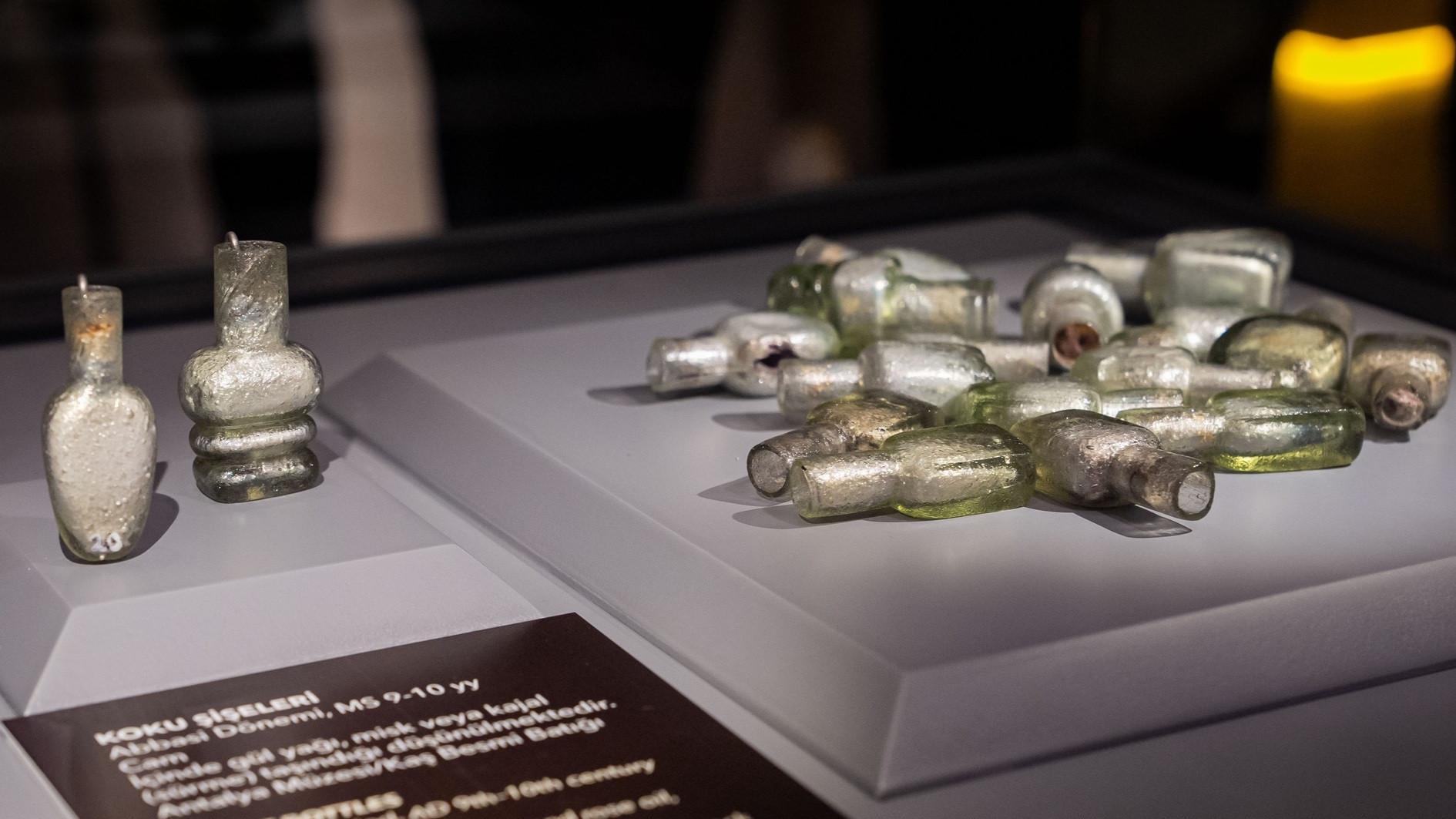
An underwater archaeological excavation off the coast of the southwestern province of Antalya's Kaş district has uncovered a collection of glass perfume bottles, dating back approximately 1,000–1,100 years, believed to have originated from the eastern Mediterranean.
The discovery was announced by Hakan Öniz, the director of the excavation. The artifacts are among 485 pieces unveiled for the first time at “The Golden Age of Archaeology” exhibition held at the Presidential Library in the capital Ankara.
Standing out among the displayed works are 15 perfume bottles, each measuring 6-7 centimeters, attributed to the Abbasid period.
Öniz emphasized Türkiye’s strong infrastructure and leadership in underwater archaeology, noting that the discipline’s roots trace back to Ottoman times.
“Underwater archaeology is a science that originated from Türkiye — not from the 1960s, but from the 1890s — when Osman Hamdi Bey, director of the Istanbul Archaeology Museum, conducted pioneering work on Bulamaç Island,” he said.
He underscored Anatolia’s unique place in history as the cradle of early navigation, where the first sailing vessels traversed its shores.
Since beginning surveys along the Mediterranean coast with the approval of the Culture and Tourism Ministry, Öniz’s team has documented 411 archaeological shipwrecks.
Under the Heritage for the Future Project, four major underwater excavations are ongoing: A Middle Bronze Age wreck in Kumluca, Antalya; the Kaş-Besmi wreck — a probable eastern Mediterranean trade ship that sank about a millenium ago carrying amphorae of olive oil from Gaza and other Palestinian ports; a small vessel off Adrasan dating to the 3rd-2nd centuries B.C.E and laden with raw glass; and a Late Hellenstic- Early Roman Imperial wreck with tens of thousands of ceramic plates.
The Kaş-Besmi excavation yielded the perfume bottles. “While excavating, one of our team members surfaced holding a small bottle. Further work revealed 15 such bottles, likely for perfumes or kohl [a cosmetic product used traditionally as eyeliner], made using a mold-blowing technique typical of Syria-Palestine,” Öniz explained.
Analysis is ongoing, but the vessels are believed to have contained fragrances such as rose oil from Damascus, musk and amber — scents widely known in the eastern Mediterranean but unfamiliar in Europe at the time.
“Perfume and glassmaking technologies traveled from the East to the West, and these bottles may represent among the earliest examples of fragrance imports to Europe,” he added.
For Öniz and his colleagues, the thrill lies not in finding gold or jewels, but in unearthing history’s unknowns — from turquoise and aquamarine-colored glass ingots to the delicate perfume bottles now on display.
The work also draws international participation with archaeologists from Australia, Argentina, Japan and numerous doctoral and graduate students joining through UNESCO, ICOMOS and the world Underwater Federation for at least 15 days of hands-on training aboard the research vessel.
“Türkiye is a world leader in underwater archaeology,” Öniz concluded. “Not because of us, but because of the extraordinary geography we are privileged to work in.”